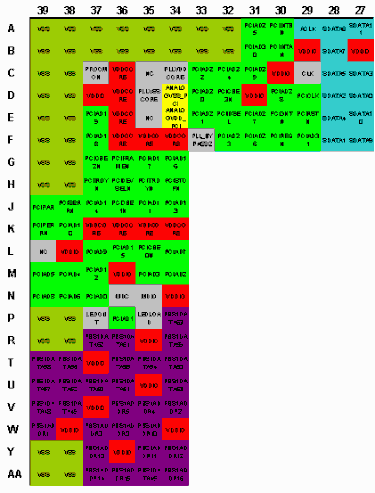Many semiconductor manufacuturers use Microsoft’s Excel spreadsheet as a general purpose tool for defining the ball matrix on BGA packages. Because Excel is universally available and understood, data about the ball assignment vs. signal is often transmitted in this fashion.
On the other hand, package design tools rely on ascii lists of nets, balls and pins to read and write the design data. A tool that can read an ASCII list and import it into Excel would be useful to product engineers who need to document a BGA’s layout.


